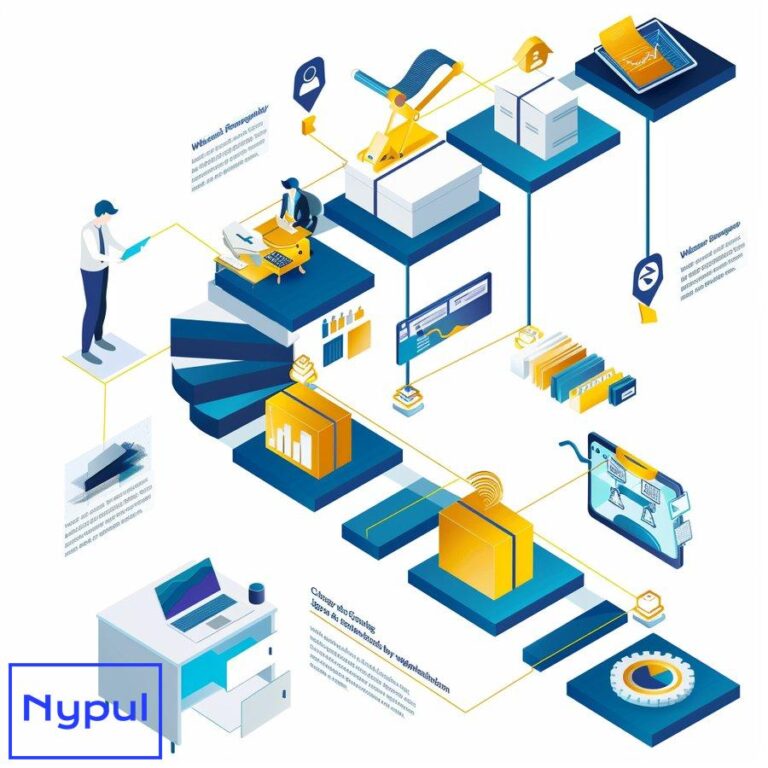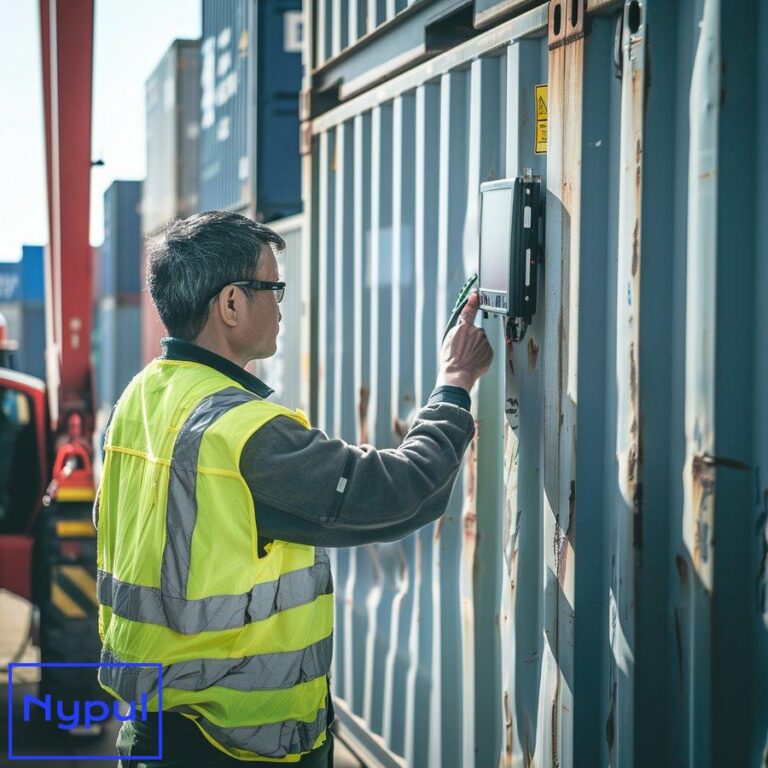What Is a CET Exam at Port
A Contraband Enforcement Team (CET) exam is a specialized inspection conducted by U.S. Customs and Border Protection (CBP) at ports of entry. These examinations are designed to detect and prevent the smuggling of illegal or restricted goods into the United States. CET exams are an integral part of the CBP’s mission to secure the nation’s borders while facilitating legitimate trade and travel.
CET exams are carried out by highly trained CBP officers who specialize in identifying and intercepting contraband. These officers employ a combination of advanced technology, intelligence gathering, and physical inspection techniques to thoroughly examine cargo shipments. The primary goal of a CET exam is to uncover prohibited items, such as narcotics, weapons, counterfeit goods, or other materials that pose a threat to national security or violate trade regulations.
Key characteristics of CET exams:
Targeted approach: CET exams are not random inspections. They are typically triggered by specific risk factors or intelligence information that suggests a higher likelihood of contraband presence in a particular shipment.
Comprehensive inspection: During a CET exam, officers may use various methods to inspect cargo, including physical examination, X-ray scanning, and the use of specialized detection equipment.
Interagency cooperation: CET exams often involve collaboration between CBP and other government agencies, such as the Drug Enforcement Administration (DEA) or the Food and Drug Administration (FDA), depending on the nature of the suspected contraband.
Time-sensitive process: While CET exams are thorough, CBP aims to complete them as quickly as possible to minimize disruptions to legitimate trade flows.
Legal authority: CET exams are conducted under the authority granted to CBP by various U.S. laws and regulations, including the Tariff Act of 1930 and the Trade Facilitation and Trade Enforcement Act of 2015.
Understanding the nature and purpose of CET exams is crucial for importers, exporters, and logistics professionals operating in international trade. These examinations play a vital role in maintaining the integrity of the global supply chain and protecting consumers from potentially harmful or illegal products.
For businesses engaged in international trade, awareness of CET exams and their implications is essential for effective risk management and compliance strategies. By recognizing the importance of these inspections and cooperating fully with CBP officers, companies can contribute to a safer and more secure trading environment while minimizing potential disruptions to their operations.
How does the CET exam process work?
The Contraband Enforcement Team (CET) exam process is a systematic and thorough procedure designed to detect and prevent the entry of illegal or restricted goods into the United States. Understanding this process is crucial for importers, freight forwarders, and other stakeholders in the international trade community. Let’s break down the key steps involved in a typical CET exam:
Step 1: Risk Assessment and Targeting
The CET exam process begins long before a shipment arrives at the port. U.S. Customs and Border Protection (CBP) employs sophisticated risk assessment tools and intelligence gathering techniques to identify high-risk shipments. Factors considered in this targeting process include:
Origin and routing: Shipments from countries known for high rates of contraband or those following unusual shipping routes may be flagged for inspection.
Importer history: The compliance record and previous inspection results of the importer are taken into account.
Commodity type: Certain types of goods that are frequently associated with smuggling attempts may receive additional scrutiny.
Intelligence information: Specific intelligence from law enforcement agencies or international partners can trigger a CET exam.
Step 2: Notification and Hold Placement
Once a shipment is selected for a CET exam, CBP places a hold on the cargo. The importer or their designated agent (usually a customs broker) is notified of the examination requirement. This notification typically includes:
Reason for examination: A general indication of why the shipment was selected for inspection.
Required documentation: A list of any additional documents that must be provided for the exam.
Examination location: Information on where the inspection will take place (e.g., Container Examination Station).
Step 3: Shipment Presentation
The importer or their agent is responsible for arranging the presentation of the shipment for examination. This process involves:
Transportation: Moving the container or cargo to the designated examination site.
Unloading: If necessary, arranging for the cargo to be unloaded for inspection.
Documentation submission: Providing all required paperwork to CBP officers.
Step 4: Physical Examination
CBP officers conduct a thorough inspection of the shipment, which may include:
Visual inspection: Officers visually examine the cargo, looking for any signs of tampering or hidden compartments.
Non-intrusive inspection (NII): Large-scale X-ray or gamma-ray scanning equipment may be used to examine container contents without opening them.
Physical search: Officers may open containers and packages to inspect their contents directly.
Use of specialized equipment: Tools such as fiber optic scopes, density meters, or narcotics detection dogs may be employed.
Sample collection: In some cases, samples of goods may be taken for laboratory analysis.
Step 5: Documentation Review
Alongside the physical inspection, CBP officers carefully review all accompanying documentation, including:
Commercial invoice
Packing list
Bill of lading
Import licenses or permits (if applicable)
Certificates of origin
Officers compare the documentation with the physical cargo to ensure accuracy and compliance with import regulations.
Step 6: Findings and Resolution
After completing the examination, CBP officers document their findings:
No discrepancies: If no contraband or violations are found, the shipment is cleared for release.
Minor discrepancies: Small issues, such as minor classification errors, may be resolved on-site with the importer or broker.
Major violations: Discovery of contraband or significant regulatory violations may result in seizure of the goods and further investigation.
Step 7: Release or Further Action
Based on the examination results:
Cleared shipments: Cargo that passes the CET exam is released for entry into U.S. commerce.
Detained shipments: Goods may be detained for further investigation or to allow the importer to provide additional information or corrective action.
Seized shipments: In cases of serious violations, CBP may seize the goods and initiate legal proceedings against the responsible parties.
Step 8: Post-Examination Procedures
After the CET exam:
Recordkeeping: CBP maintains detailed records of the examination and its results.
Importer notification: The importer or their agent is informed of the examination outcome and any required follow-up actions.
Data analysis: Results are analyzed to refine future targeting and risk assessment processes.
Understanding this process helps importers and trade professionals navigate CET exams more effectively. By being prepared and cooperative, businesses can help ensure a smooth examination process while supporting CBP’s mission to secure the nation’s borders and facilitate legitimate trade.
What types of contraband do CET exams target?
Contraband Enforcement Team (CET) exams are designed to detect and intercept a wide range of illegal or restricted items entering the United States. The types of contraband targeted by these examinations reflect the diverse threats to national security, public health, and economic interests. Understanding the primary categories of contraband helps importers and logistics professionals appreciate the scope and importance of CET exams.
Narcotics and Controlled Substances
Illegal drugs remain a top priority for CET exams. Officers are trained to detect:
Cocaine: Often concealed in shipments from South America.
Heroin: Frequently hidden in cargo from Southeast and Southwest Asia.
Methamphetamine: Increasingly found in shipments from Mexico and East Asia.
Fentanyl and other synthetic opioids: Often shipped in small quantities from China.
Marijuana: Despite legalization in some states, it remains illegal under federal law.
Prescription drugs: Unauthorized imports of controlled medications.
Weapons and Explosives
CET exams play a crucial role in preventing the smuggling of:
Firearms: Including handguns, rifles, and automatic weapons.
Ammunition: Often shipped separately from firearms to avoid detection.
Explosives and precursor chemicals: Materials that could be used in terrorist activities.
Weapon parts and accessories: Components that may be assembled into functional weapons.
Counterfeit Goods
Protecting intellectual property rights is another key focus of CET exams:
Designer clothing and accessories: Fake luxury brands are a common target.
Electronics: Counterfeit smartphones, computers, and other devices.
Pharmaceuticals: Fake or substandard medications that pose health risks.
Automotive parts: Counterfeit components that may compromise vehicle safety.
Software and media: Pirated digital content and unlicensed software.
Prohibited Agricultural Products
CET exams help protect U.S. agriculture and ecosystems by intercepting:
Unprocessed meat and dairy products: Potential carriers of animal diseases.
Fresh fruits and vegetables: May harbor invasive pests or plant diseases.
Seeds and plants: Unauthorized imports that could introduce harmful species.
Animal products: Including ivory, exotic leather, and other protected species products.
Hazardous Materials
CET officers are vigilant for improperly imported hazardous substances:
Chemical weapons precursors: Dual-use chemicals that could be weaponized.
Toxic industrial chemicals: Substances that pose environmental or health risks.
Radioactive materials: Unauthorized imports of nuclear or radiological materials.
Biological agents: Potentially dangerous microorganisms or toxins.
Currency and Financial Instruments
CET exams also target attempts to circumvent financial regulations:
Bulk cash smuggling: Large amounts of undeclared currency.
Negotiable instruments: Bearer bonds or other high-value financial documents.
Virtual currency hardware: Devices used to store or transfer cryptocurrency.
Human Trafficking and Smuggling
While less common in cargo shipments, CET exams may uncover evidence of:
Human trafficking: Documents or materials related to forced labor or sex trafficking.
Human smuggling: Hidden compartments or life support systems in cargo containers.
Cultural Property and Antiquities
CET exams help prevent the illegal importation of:
Stolen artifacts: Archaeological items illegally excavated or removed from their country of origin.
Looted art: Paintings, sculptures, or other artworks obtained through theft or conflict.
Forged historical documents: Fake manuscripts or other fraudulent historical items.
Restricted Technology
CET officers are trained to identify unauthorized imports of:
Military and defense technology: Equipment or components subject to export controls.
Dual-use items: Technologies with both civilian and potential military applications.
Surveillance equipment: Advanced monitoring or interception devices.
To illustrate the diversity and frequency of contraband interceptions, consider the following table showing hypothetical data on CET exam findings for a recent fiscal year:
| Contraband Category | Number of Seizures | Estimated Value (USD) |
|---|---|---|
| Narcotics | 12,500 | $1.2 billion |
| Counterfeit Goods | 27,000 | $1.5 billion |
| Weapons/Explosives | 3,200 | $150 million |
| Agricultural Products | 18,000 | $75 million |
| Hazardous Materials | 950 | $40 million |
| Currency | 1,100 | $90 million |
| Cultural Property | 250 | $25 million |
| Restricted Technology | 750 | $200 million |
This table demonstrates the wide-ranging nature of contraband targeted by CET exams and the significant impact these inspections have on preventing illegal imports. By focusing on these diverse categories of prohibited items, CET exams play a crucial role in protecting national security, public health, and the integrity of legitimate international trade.
For importers and logistics professionals, awareness of these contraband categories is essential. It underscores the importance of thorough supply chain due diligence, robust compliance programs, and careful attention to import regulations. By understanding what CET exams target, businesses can better prepare for potential inspections and take proactive steps to ensure their shipments are fully compliant with U.S. import laws and regulations.
How do CET exams impact shipments and importers?
Contraband Enforcement Team (CET) exams can have significant impacts on both shipments and importers. These examinations, while necessary for national security and trade compliance, can create various challenges and consequences for businesses engaged in international trade. Understanding these impacts is crucial for importers to effectively manage their supply chains and mitigate potential risks.
Immediate Impacts on Shipments
Delays in Cargo Release: The most immediate and noticeable impact of a CET exam is the delay in cargo release. Shipments selected for examination are placed on hold, which can significantly extend the time required for customs clearance.
Physical Handling of Goods: During the examination, cargo may need to be unloaded, unpacked, and repacked. This handling increases the risk of damage to the goods, especially for fragile or sensitive items.
Container Devanning and Reloading: For containerized shipments, the entire container may need to be emptied (devanned) for inspection and then reloaded. This process can be time-consuming and may require specialized equipment or labor.
Potential for Product Contamination: In some cases, particularly with food products or sterile goods, the examination process may compromise the integrity or cleanliness of the shipment.
Disruption of Temperature-Controlled Shipments: For goods requiring specific temperature conditions, such as pharmaceuticals or perishable foods, a CET exam can disrupt the cold chain, potentially affecting product quality.
Long-Term Effects on Importers
Increased Costs: CET exams often result in additional expenses for importers, including:
Examination fees: Charges for the use of Centralized Examination Stations (CES) or Container Freight Stations (CFS).
Demurrage and detention charges: Fees incurred for extended use of containers or storage at port facilities.
Transportation costs: Expenses related to moving cargo to and from examination sites.
Labor costs: Additional personnel may be required to manage the examination process and its aftermath.
Supply Chain Disruptions: Delays caused by CET exams can ripple through the entire supply chain, potentially leading to:
Stockouts: Delayed shipments may result in inventory shortages for retailers or manufacturers.
Production delays: For just-in-time manufacturing operations, exam-related delays can disrupt production schedules.
Missed sales opportunities: Late deliveries may lead to canceled orders or lost customers.
Compliance Scrutiny: Importers who undergo CET exams may face increased scrutiny in future shipments:
Higher examination rates: A history of CET exams may lead to more frequent inspections of future shipments.
Compliance reviews: CBP may conduct more thorough reviews of the importer’s overall compliance practices.
Reputational Impact: Frequent CET exams or discoveries of even minor discrepancies can affect an importer’s reputation:
Customs profile: The importer’s risk profile with CBP may be negatively impacted.
Business relationships: Delays and complications may strain relationships with customers and business partners.
Competitive disadvantage: Consistently delayed shipments can put an importer at a disadvantage compared to competitors with smoother import processes.
Operational Adjustments: To manage the risk and impact of CET exams, importers often need to make operational changes:
Increased inventory levels: Maintaining higher safety stock to buffer against potential delays.
Extended lead times: Adjusting order and shipping schedules to account for possible examinations.
Enhanced compliance measures: Implementing more rigorous internal controls and documentation processes.
Financial Implications: The cumulative effect of CET exams can have significant financial impacts:
Cash flow issues: Delayed shipments can lead to delayed payments and strained cash flow.
Increased working capital requirements: Higher inventory levels and extended lead times tie up more capital.
Insurance considerations: Importers may need to reassess their cargo insurance coverage to account for examination-related risks.
To illustrate the potential financial impact of CET exams on importers, consider the following hypothetical cost breakdown for a single examination:
| Cost Category | Amount (USD) |
|---|---|
| CES/CFS Fees | $1,000 |
| Demurrage Charges (5 days) | $750 |
| Additional Transportation | $500 |
| Labor Costs | $400 |
| Potential Product Damage | $300 |
| Administrative Overhead | $250 |
| Total Estimated Cost | $3,200 |
This table demonstrates that even a single CET exam can result in significant additional costs for an importer. When multiplied across multiple shipments or repeated examinations, these costs can have a substantial impact on a company’s bottom line.
Strategies for Managing CET Exam Impacts
To mitigate the negative effects of CET exams, importers can adopt several strategies:
Proactive Compliance Programs: Implementing robust internal controls and compliance measures can reduce the likelihood of being targeted for examinations.






